Understanding Who or What
Dividing Objects into Categories
Beginning early in development, children attempt to understand what kinds of things exist in the world. They quickly divide the objects they encounter into three general categories: inanimate objects, people, and other animals (they are unsure for many years whether plants are more like animals or more like inanimate objects) (S. A. Gelman & Kalish, 2006). Forming these broad divisions is crucial, because different types of concepts apply to different types of objects (Keil, 1979). Some concepts apply to anything—all things, living and nonliving, have height, weight, color, size, and so on. Other concepts apply only to living things—only living things eat, drink, grow, and breathe, for example. Yet other concepts—reading, shopping, pondering, and talking—apply only to people. Forming these general categories of objects allows children to draw accurate inferences about unfamiliar entities. For example, when told that a platypus is a kind of animal, children know immediately that a platypus can move, eat, grow, reproduce, and so on.
262
A number of researchers hypothesize that children organize their observations of these categories into informal theories (e.g., Carey, 2009; G. L. Murphy & Medin, 1985; Vamvakoussi & Vosniadou, 2010). Wellman and Gelman (1998) proposed that young children organize their knowledge of the things in the world into three informal theories: a theory of physics (inanimate objects), a theory of psychology (people), and a theory of biology (other living things). These informal theories are viewed as having an innate core but also as incorporating—and in some cases being radically transformed by—learning processes such as association, observation, and the statements of other people (S. A. Gelman & Kalish, 2006). These informal theories are rudimentary, but they share three important characteristics with formal scientific theories:
- They identify fundamental units for dividing all objects and events into a few basic categories.
- They explain many phenomena in terms of a few fundamental principles.
- They explain events in terms of unobservable causes.
Each characteristic is evident in the preschool period (E. M. Evans, 2008; S. A. Gelman, 2003; Inagaki & Hatano, 2008). Consistent with the first characteristic, preschoolers divide all objects into people, other animals, plants, and nonliving things. Consistent with the second characteristic, preschoolers understand broadly applicable principles—that a desire for food and water underlies many behaviors of animals, for example. Consistent with the third characteristic, preschoolers know that many of animals’ vital activities, such as movement and healing from illness, are caused by something inside the animals as opposed to the external forces that determine the actions of inanimate objects.
When do children first generate such core theories? Spelke (2003) speculated that infants begin life with a primitive theory of physics, that is, of inanimate objects. The theory includes the knowledge that the world contains physical objects that occupy space, move only in response to external forces, move in continuous ways through space rather than jumping from one position to another, and cannot simultaneously occupy the same space as another object.
Wellman and Gelman (1998) suggested that children’s first theory of psychology emerges at around 18 months of age, and their first theory of biology at around 3 years. The first theory of psychology is organized around the understanding that other people’s actions reflect their desires. For example, a 2-year-old boy realizes that his mother will want to eat if she is hungry, regardless of whether the 2-year-old himself is hungry. The first theory of biology is organized around the realization that people and other animals are living things, different from nonliving things and plants. For example, 3- and 4-year-olds realize that animals, but not inanimate objects, move under their own power (S. A. Gelman, 2003).
Of course, vast development occurs beyond these initial theories. Some of this development builds on the original organization and fills in details. As noted in Chapter 5, for instance, even 3-month-olds understand that an object (e.g., a glass) will fall unless at least some part of it is supported by another object (e.g., a table), but not until about 5 months of age do infants understand that the object also will fall if only a small portion is supported (Baillargeon, 1994). In other cases, children may replace rudimentary theories with more advanced ones. Their initial biological theory distinguishes animals from inanimate objects and plants; not until the age of 7 years are children convinced that the category living things includes plants as well as animals (Inagaki & Hatano, 2008).
263
category hierarchy  categories that are related by set–subset relations, such as animal/dog/poodle
categories that are related by set–subset relations, such as animal/dog/poodle
Just as these theories help children divide objects into broad categories, forming category hierarchies—that is, categories organized according to set–subset relations—helps children make finer distinctions among the objects within each category. The furniture/chair/La-Z-Boy example shown in Table 7.1 is one example. The category “furniture” includes all chairs; the category “chair” includes all La-Z-Boys. Forming such category hierarchies greatly simplifies the world for children by allowing them to draw accurate inferences. Knowing that a La-Z-Boy is a kind of chair allows children to use their general knowledge of chairs to infer that people sit on La-Z-Boys and that La-Z-Boys are neither lazy nor boys.
Of course, infants are not born knowing about La-Z-Boys and chairs, nor are they born knowing the other categories shown in Table 7.1. Thus, one important question is: How do infants and older children form categories that apply to all kinds of objects, living and nonliving?
Categorization of Objects in Infancy
Even in the first months of life, infants form categories of objects. P. C. Quinn and Eimas (1996), for example, found that when they were shown a series of photographs of very different breeds of cats, 3- and 4-month-olds habituated; that is, they looked at new cat photographs for less and less time. However, when the infants were subsequently shown a picture of a dog, lion, or other animal, they dishabituated; that is, their looking time increased. Their habituation to the cat photographs suggests that the infants saw all the cats, despite their differences, as members of a single category; their subsequent dishabituation to the photo of the dog or other animal suggests that the infants saw those creatures as members of categories other than cats.
Infants also can form categories more general than “cats.” Behl-Chadha (1996) found that 6-month-olds habituated after repeatedly being shown pictures of different types of mammals (dogs, zebras, elephants, and so forth) and then dishabituated when they were shown a picture of a bird or a fish. The infants apparently perceived similarities among the mammals that led to their eventually losing interest in them. The infants also apparently perceived differences between the mammals and the bird or fish that led them to show renewed interest.
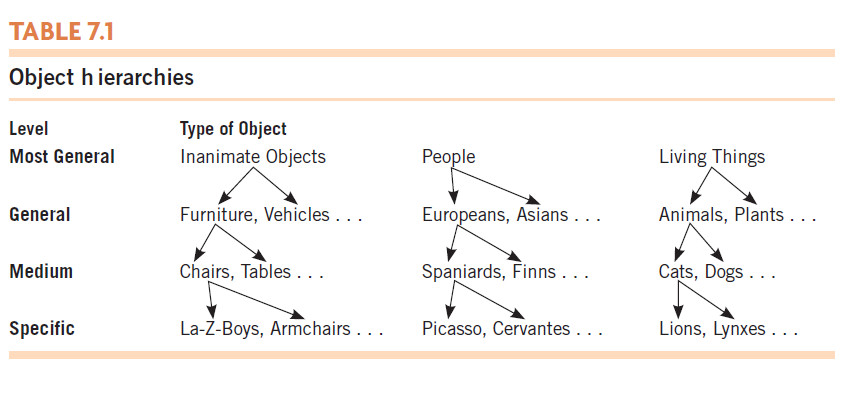
264
perceptual categorization  the grouping together of objects that have similar appearances
the grouping together of objects that have similar appearances
As suggested by this example, infants frequently use perceptual categorization, the grouping together of objects that have similar appearances (L. B. Cohen & Cashon, 2006; Madole & Oakes, 1999). Prior to participating in the Behl-Chadha (1996) study, few infants would have seen zebras or elephants. Thus, the distinctions the infants made between these mammals and the birds and fish could only have been based on perception of the animals’ differing appearances.
Infants categorize objects along many perceptual dimensions, including color, size, and movement. Often their categorization is largely based on specific parts of an object rather than on the object as a whole; for example, infants younger than 18 months rely heavily on the presence of legs to categorize objects as animals, and they rely heavily on the presence of wheels to categorize objects as vehicles (Rakison & Lupyan, 2008; Rakison & Poulin-Dubois, 2001).
As children approach their 2nd birthday, they increasingly categorize objects on the basis of overall shape. As discussed in Chapter 6, when toddlers are shown an unfamiliar object and told that it is a “dax,” they assume that other objects of the same shape are also “daxes,” even when the objects differ from each other in size, texture, and color (Landau, Smith, & Jones, 1998). This is a useful assumption, because for many objects, shape indeed is similar for different members of a category. If we see a silhouette of a cat, hammer, or chair, we can tell from the shape what the object is. However, we rarely can do the same if we know only the object’s color or size or texture.
Categorization of Objects Beyond Infancy
As children move beyond infancy, they increasingly grasp not only individual categories but also hierarchical and causal relations among categories.
superordinate level  the most general level within a category hierarchy, such as “animal” in the animal/dog/poodle example
the most general level within a category hierarchy, such as “animal” in the animal/dog/poodle example
Category hierarchies The category hierarchies that young children form often include three of the main levels in Table 7.1: the general one, which is called the superordinate level; the very specific one, called the subordinate level; and the medium or in-between one, called the basic level (Rosch et al., 1976). As its name suggests, the basic level is the one that children usually learn first. Thus, they typically form categories of medium generality, such as “tree,” before they form more general categories such as “plant” or more specific ones such as “oak.”
subordinate level  the most specific level within a category hierarchy, such as “poodle” in the animal/dog/poodle example
the most specific level within a category hierarchy, such as “poodle” in the animal/dog/poodle example
The reasons why children generally form the basic level first are not hard to understand. A basic-level category such as “tree” has a number of consistent characteristics: bark, branches, large size, and so on. In contrast, the more general category “plant” has fewer consistent characteristics: plants come in a wide range of shapes, sizes, and colors (consider an oak, a rose, and a house plant). Subordinate-level categories have the same consistent characteristics as the basic-level category, and some additional ones—all oaks, but not all trees, have rough bark and pointed leaves, for example. However, it is relatively difficult to discriminate among different subordinate categories within the same basic-level category (oaks versus maples, for example). Thus, it is not surprising that children tend to form basic-level categories first.
basic level  the middle level, and often the first level learned, within a category hierarchy, such as “dog” in the animal/dog/poodle example
the middle level, and often the first level learned, within a category hierarchy, such as “dog” in the animal/dog/poodle example
Very young children’s basic categories do not always match those of adults. For example, rather than forming separate categories of cars, motorcycles, and buses, young children seem to group these objects together into a category of “objects with wheels” (Mandler & McDonough, 1998). Even in such cases, however, the initial categories are less general than such categories as “moving things” and more general than ones such as “Toyotas.”
265
Having formed basic-level categories, how do children go on to form superordinate and subordinate categories? Part of the answer is that parents and others use the child’s basic-level categories as a foundation for explaining the more specific and more general categories (S. A. Gelman et al., 1998). When parents teach children superordinate categories such as mammals, they typically illustrate properties of the relevant terms with basic-level examples that the child already knows (Callanan, 1990). They might say, “Mammals are animals, like foxes, bears, and cows, that get milk from their mothers when they are babies.”
Parents also refer to basic-level categories to teach children subordinate-level terms (Callanan & Sabbagh, 2004; Waxman & Senghas, 1992). For example, a parent might say, “Belugas are a kind of whale.” Preschoolers are sensitive to the nuances of such statements; for example, they generalize more widely from categorical statements such as “Belugas are a kind of whale” than from statements about specific objects, such as “This beluga is a whale” (Cimpian & Scott, 2012). Thus, statements that specify relations among categories of objects allow children to use what they already know about basic-level categories to form superordinate- and subordinate-level categories.
Although parents’ explanations clearly enhance children’s conceptual understanding, the learning path sometimes involves amusing detours. In one such case, Susan Gelman (2003) gave her 2-year-old son a spoon and a container filled with bite-size pieces of fruit and said, “This is a fruit cup.” The boy responded to her description by picking up the “cup” and attempting to drink from it. Children’s active attempts to understand their experiences lead to many short-lived but interesting concepts such as the “fruit cup.”
Causal understanding and categorization Toddlers and preschoolers are notorious for their endless questions about causes and reasons. “Why do dogs bark?” “How does the iPhone know where to call?” “Where does rain come from?” Although parents are often exasperated by such questions, their respecting and answering the inquiries help children learn (Chouinard, 2007).
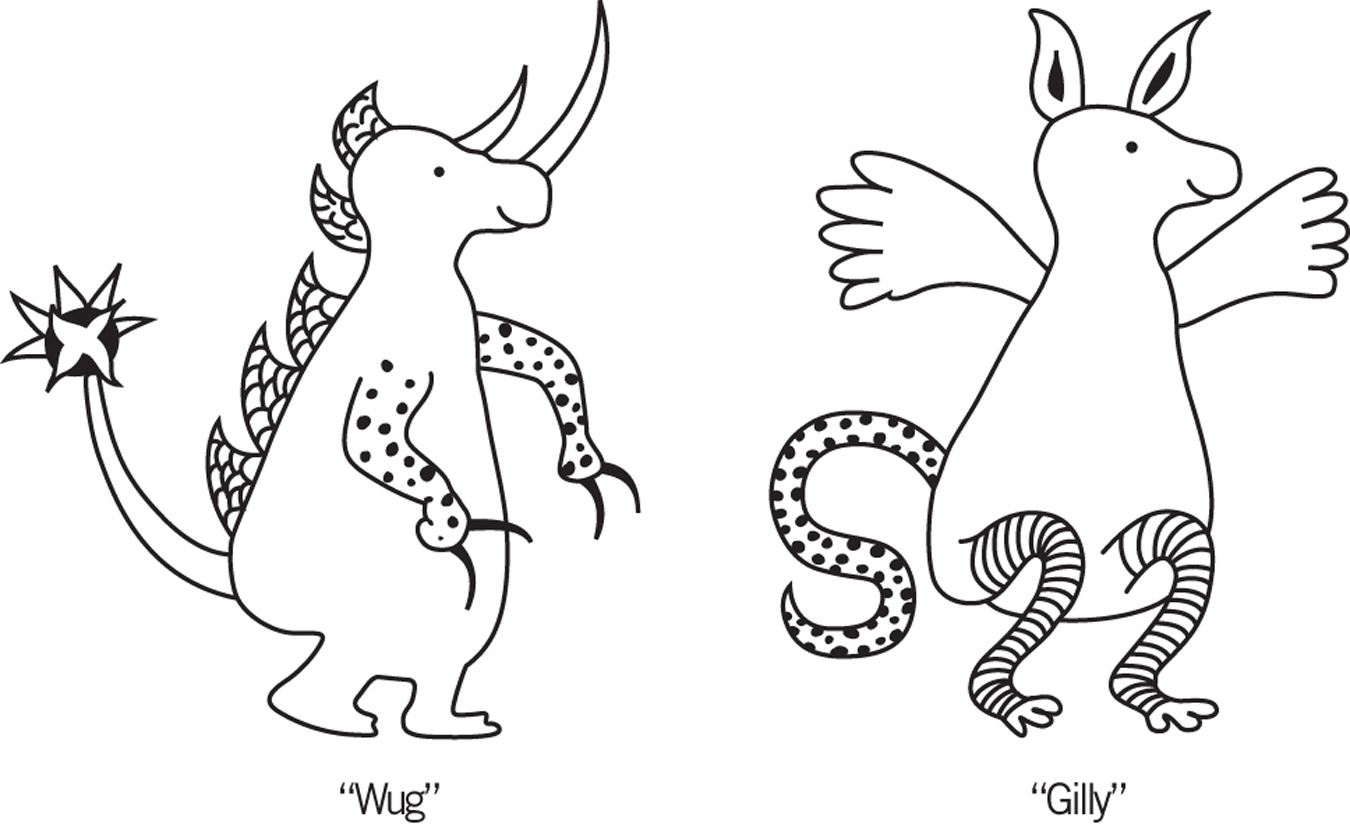
Understanding causal relations is crucial in forming many categories. How could children form the category of “light switches,” for example, if they did not understand that flipping certain objects causes lights to go on and off? To study how an understanding of causes and effects influences category formation, Krascum and Andrews (1998) told 4- and 5-year-olds about two categories of imaginary animals: wugs and gillies. Some of the preschoolers were provided only physical descriptions of the animals: they were told that wugs usually have claws on their feet, spikes on the end of their tails, horns on their heads, and armor on their backs; gillies were described as usually having wings, big ears, long tails, and long toes. Other children were provided the same physical descriptions, plus a simple causal story that explained why wugs and gillies are the way they are. These children were told that wugs have claws, spikes, horns, and armor because they like to fight. Gillies, in contrast, do not like to fight; instead, they hide in trees. Their big ears let them hear approaching wugs, their wings let them fly away to treetops, and so on. After the children in both groups were given the information about these animals, they were shown the pictures in Figure 7.1 and asked which animal was a wug and which animal was a gilly.
The children who were told why wugs and gillies have the physical features they do were better at classifying the pictures into the appropriate categories. When tested the next day, those children also remembered the categories better than did the children who were given the physical descriptions without explanations. Thus, understanding cause–effect relations helps children learn and remember new categories.
266
Knowledge of Other People and Oneself
naïve psychology  a commonsense level of understanding of other people and oneself
a commonsense level of understanding of other people and oneself
Although the understanding of oneself and others varies greatly from individual to individual, just about everybody has a commonsense level of psychological understanding. This naïve psychology is crucial to normal human functioning and is a major part of what makes us people. Adult chimpanzees are the equal of human 2½-year-olds on a wide range of tasks that require physical reasoning, such as how to use tools to obtain food, but fall far short of the toddlers on tasks requiring social reasoning, such as inferring intentions from behavior (Herrmann, et al., 2007; Tomasello, 2008).
At the center of naïve psychology are three concepts that we all use to understand human behavior: desires, beliefs, and actions (Wellman, in press). We apply these concepts almost every time we think about why someone did something. For example, why did Jimmy go to Billy’s house? He wanted to play with Billy (a desire), and he expected that Billy would be at home (a belief), so he went to Billy’s house (an action). Why did Jenny turn the TV to Channel 5 at 8:00 a.m. on Saturday? She was interested in watching SpongeBob Squarepants (a desire) and she thought the program was on Channel 5 at 8 in the morning (a belief), so she selected that channel at that time (an action).
Three properties of naïve psychological concepts are noteworthy. First, many of them refer to invisible mental states. No one can see a desire or a belief or other psychological concepts such as a perception or a memory. We, of course, can see behaviors related to invisible psychological concepts, such as Jimmy’s ringing Billy’s doorbell, but we can only infer the underlying mental state, such as Jimmy’s desire to see Billy. Second, psychological concepts are linked to one another in cause–effect relations. Jimmy, for example, might get angry if Billy isn’t home because he went to a different friend’s house, which could later cause Jimmy to be mean to his younger brother. The third noteworthy property of these naïve psychological concepts is that they develop surprisingly early in life.
Sharp disagreements have arisen between nativists and empiricists regarding the source of this early psychological understanding. Nativists (e.g., Leslie, 2000) argue that the early understanding is possible only because children are born with a basic understanding of human psychology. In contrast, empiricists (e.g., Frye et al., 1996; Ruffman, Slade, & Crowe, 2002) argue that experiences with other people and general information-processing capacities are the key sources of the early understanding of other people. There is evidence to support each view.
Infants’ Naïve Psychology
As we saw in Chapter 5, infants find people interesting, pay careful attention to them, and learn an impressive amount about them in the first year. Even very young infants prefer to look at people’s faces rather than at other objects. Infants also imitate people’s facial movements, such as sticking out their tongue, but they do not imitate the motions of inanimate objects. And it is not just the face that interests infants; they also prefer to watch human bodies moving instead of other displays with equal amounts of movement (Bertenthal, 1993).
267
This early interest in human faces and bodies helps infants learn about people’s behavior. Imitating other people and forming emotional bonds with them encourages the other people to interact more with the infants, creating additional opportunities for the infants to acquire psychological understanding.
As noted earlier, many important aspects of psychological understanding emerge late in the first year and early in the second. One is an understanding of intention, the desire to act in a certain way. Other key psychological concepts that emerge at the same time include joint attention, in which two or more people focus intentionally on the same referent; and intersubjectivity, the mutual understanding that people share during communication (Chapter 4, page 159).
One-year-olds’ understanding of other people already includes an understanding of their emotions. Consider the following incident:
Michael, 15 months, is struggling with his friend Paul over a toy. Paul starts to cry. Michael appears concerned and lets go of the toy, so Paul has it. Paul continues crying. Michael pauses, then gives his own teddy bear to Paul; Paul continues crying. Michael pauses again, runs to the next room, gets Paul’s security blanket, and gives it to him. Paul stops crying.
(Hoffman, 1976, pp. 129–130)
Although interpreting anecdotes is always tricky, it seems likely that Michael understood that giving Paul something that he liked might make him feel better (or at least stop his crying). Michael’s leaving the room, getting Paul’s security blanket, and bringing it back to him suggests that Michael had the further insight that Paul’s blanket might be especially useful for soothing his hurt feelings. This interpretation is consistent with a variety of evidence suggesting that 1-year-olds fairly often offer both physical comfort (hugs, kisses, pats) and comforting comments (“You be okay”) to unhappy playmates. Presumably, infants’ experience of their own emotions and the behaviors that accompany them helps them understand the emotions that accompany others’ actions (Harris, 2006).
Development Beyond Infancy
In the toddler and preschool periods, children build on their early-emerging psychological understanding to develop an increasingly sophisticated comprehension of themselves and other people and to interact with others in increasingly complex ways. Two areas of especially impressive development are understanding of other people’s minds and play with peers.
theory of mind  an organized understanding of how mental processes such as intentions, desires, beliefs, perceptions, and emotions influence behavior
an organized understanding of how mental processes such as intentions, desires, beliefs, perceptions, and emotions influence behavior
The growth of a theory of mind Infants’ and preschoolers’ naïve psychology, together with their strong interest in other people, provides the foundation for a theory of mind, an organized understanding of how mental processes such as intentions, desires, beliefs, perceptions, and emotions influence behavior. Preschoolers’ theory of mind includes, for example, knowledge that beliefs often originate in perceptions, such as seeing an event or hearing someone describe it; that desires can originate either from physiological states, such as hunger or pain, or from psychological states, such as wanting to see a friend; and that desires and beliefs produce actions (S. A. Miller, 2012).
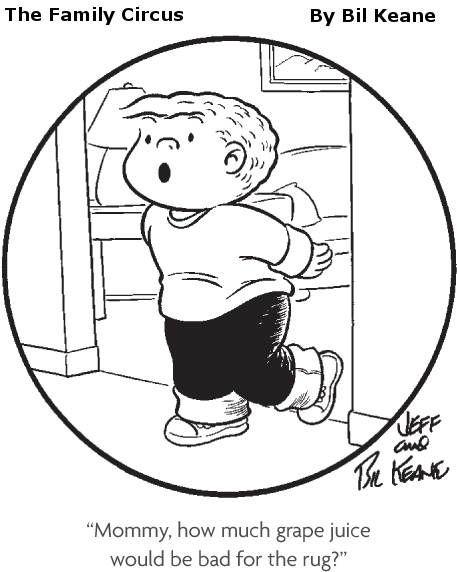
One important component of such a theory of mind—understanding the connection between other people’s desires and their actions—emerges by the end of the first year. In a study by Phillips, Wellman, and Spelke (2002), 12-month-olds saw an experimenter look at one of two stuffed kittens and say in a joyful voice, “Ooh, look at the kitty!” Then a screen descended, and when it was raised 2 seconds later, the experimenter was holding either the kitty that she had just gushed over or the other one. The 12-month-olds looked longer when the experimenter was holding the other kitty, suggesting that they expected the experimenter to want to hold the kitty that had just excited her so much and were surprised that she was holding the other one. Eight-month-olds looked for similar amounts of time regardless of which kitty the experimenter held, suggesting that the understanding that people’s desires guide their actions develops toward the end of the first year (Phillips et al., 2002). Consistent with this conclusion, 10-month-olds can use information about a person’s earlier desires to predict that person’s later desires, but only if the earlier and later circumstances are virtually identical (Sommerville & Crane, 2009).
268
The understanding that desires lead to actions is firmly established by age 2 years. Children of this age, for instance, predict that characters in stories will act in accord with their own desires, even when those desires differ from the child’s preferences (Gopnik & Slaughter, 1991; Lillard & Flavell, 1992). Thus, if 2-year-olds who would rather play with trucks than with dolls are told that a character in a story would rather play with dolls than with trucks, they predict that, given the choice, the character in the story will choose dolls over trucks.
Although most 2-year-olds understand that desires can influence behavior, they show little understanding that beliefs are likewise influential. Thus, when 2-year-olds were told a story in which a character named Sam believed that the only bananas available were in a cupboard, but they themselves knew that there were bananas in a refrigerator as well, they were no more likely than by chance to predict that Sam would act in accord with his own belief and search for bananas only in the cupboard (Wellman & Woolley, 1990).
By age 3 years, children show some understanding of the relation between beliefs and actions. For example, they answer questions such as “Why is Billy looking for his dog?” by referring to beliefs (“He thinks the dog ran away”) as well as to desires (“He wants it”) (Bartsch & Wellman, 1995). Most 3-year-olds also have some knowledge of how beliefs originate. They know, for example, that seeing an event produces beliefs about it, whereas simply being next to someone who can see the event does not (Pillow, 1988).
false-belief problems  tasks that test a child’s understanding that other people will act in accord with their own beliefs even when the child knows that those beliefs are incorrect
tasks that test a child’s understanding that other people will act in accord with their own beliefs even when the child knows that those beliefs are incorrect
At the same time, 3-year-olds’ understanding of the relation between people’s beliefs and their actions is limited in important ways. These limitations are evident when children are presented with false-belief problems, in which another person believes something to be true that the child knows is false. The question is whether the child thinks that the other person will act in accord with his or her own false belief or in accord with the child’s correct understanding of the situation. Studying such situations reveals whether children understand that other people’s actions are determined by the contents of their own minds rather than by the objective truth of the situation.

In one false-belief problem, preschoolers are shown a box that ordinarily contains a type of candy called Smarties and that has a picture of the candy on it (Figure 7.2). The experimenter then asks what is inside the box. Logically enough, the preschoolers say “Smarties.” Next, the experimenter opens the box, revealing that it actually contains pencils. Most 5-year-olds laugh or smile and admit their surprise. When asked what another child would say if shown the closed box and asked to guess its contents, they say the child would answer “Smarties,” just as they had. Not 3-year-olds! A large majority of them claim they always knew what was in the box, and they predict that if another child were shown the box, that child would also believe that the box contained pencils (Gopnik & Astington, 1988). The 3-year-olds’ responses show they have difficulty understanding that other people act on their own beliefs, even when those beliefs are false.
269
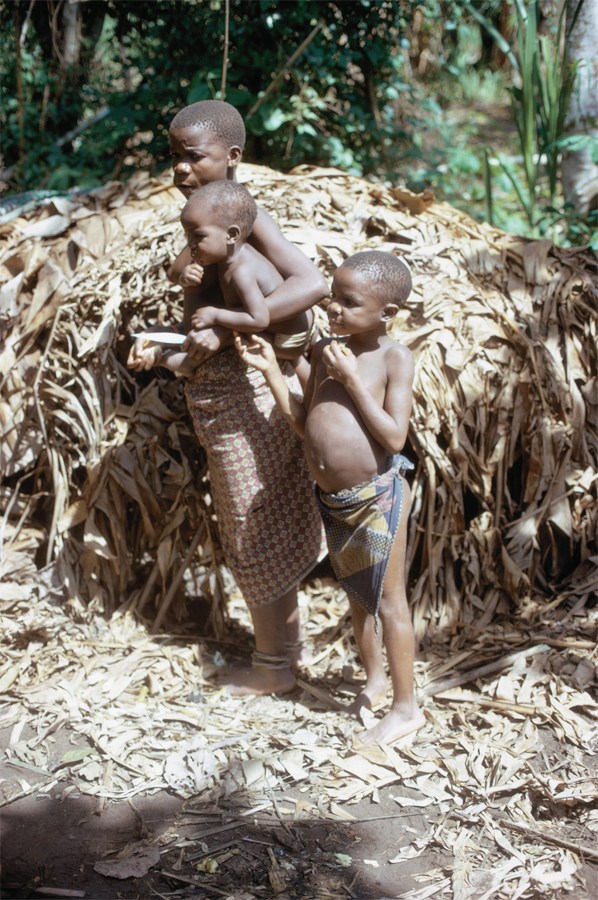
This finding is extremely robust. A review of 178 studies of children’s understanding of false beliefs showed that similar results emerged with different forms of the problem, different questions, and different societies (Wellman, Cross, & Watson, 2001). In one noteworthy cross-cultural study, false-belief problems were presented to children attending preschools in Canada, India, Peru, Thailand, and Samoa (Callaghan et al., 2005). Performance improved greatly between ages 3 and 5 years in all five societies, from 14% correct for 3-year-olds to 85% correct for 5-year-olds. Especially striking was the consistency of performance across these very different societies: in no country did 3-year-olds answer more than 25% of problems correctly, and in no country did 5-year-olds answer less than 72% correctly.
Although 3-year-olds generally err on false-belief problems when the problems are presented in the standard way, many children of this age succeed if the task is presented in a manner that facilitates understanding. For example, if an experimenter tells a 3-year-old that the two of them are going to play a trick on another child by hiding pencils in a Smarties box and enlists the child’s help in filling the box with pencils, most 3-year-olds correctly predict that the other child will say that the box contains Smarties (K. Sullivan & Winner, 1993). Presumably, assuming the role of deceiver by hiding the pencils in the candy box helps 3-year-olds see the situation from the other child’s perspective. Nonetheless, it is striking just how difficult 3-year-olds find standard false-belief problems. To date, no set of conditions has enabled 3-year-olds to solve standard false-belief questions correctly more often than by chance (Harris, 2006).
Children’s theories of mind continue to develop long beyond this early period, with at least some of the development dependent on specific experiences. For example, 14-year-olds who had experience acting in plays over the course of a school year showed greater understanding of other people’s thinking at the end of the year than before their acting experience (T. R. Goldstein & Winner, 2011). In contrast, peers who received other types of arts education (music or visual arts) for the same period did not show comparable gains in understanding other people’s thinking.
Explaining the development of theory of mind People’s lives clearly would be very different without a reasonably sophisticated theory of mind. However, the findings on the improvement in a typical child’s theory of mind between ages 3 and 5 do not tell us what causes the improvement. This question has generated enormous controversy, and currently there is great disagreement about how to answer it.
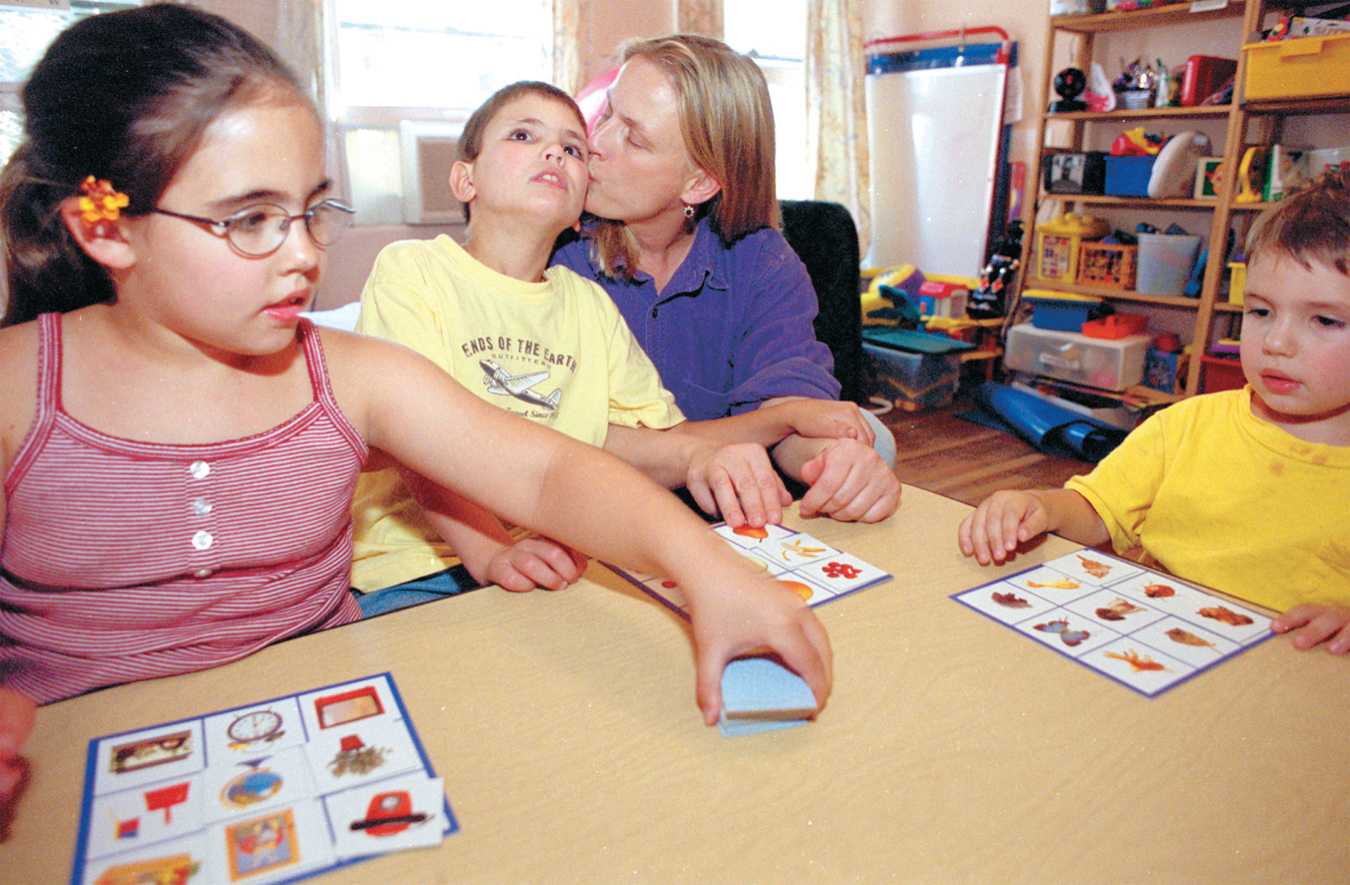
theory of mind module (TOMM)  a hypothesized brain mechanism devoted to understanding other human beings
a hypothesized brain mechanism devoted to understanding other human beings
Investigators who take a nativist position have proposed the existence of a theory of mind module (TOMM), a hypothesized brain mechanism devoted to understanding other human beings (Baron-Cohen, 1995; Leslie, 2000). Advocates of this position argue that among typical children exposed to a typical environment, the TOMM matures over the first 5 years, producing an increasingly sophisticated understanding of people’s minds. These investigators cite evidence from brain-imaging studies showing that certain areas of the brain are consistently active in representing beliefs across different tasks, and that the areas are different from those involved in other complex cognitive processes, such as understanding grammar (R. Saxe & Powell, 2006).
270
Further evidence that is often cited to support the idea of the TOMM comes from children with autism spectrum disorders. As discussed in Box 7.1, these children have great difficulty with false-belief problems, as well as with understanding people more generally. Consistent with the idea of a TOMM, one reason for these difficulties in understanding the social world appears to be atypical sizes of certain brain areas that are crucial for understanding people (Amaral, Schumann, & Nordahl, 2008).
Box 7.1: individual differences
Children with Autism Spectrum Disorders (ASD)
Although most children readily handle false-belief problems by the age of 5 years, one group continues to find them very difficult even when they are teenagers: children with autism spectrum disorders (ASD). As discussed in Chapter 3 (page 95), this syndrome, which strikes roughly 1 in 100 children in the United States, most of them male (Centers for Disease Control and Prevention, 2012), involves difficulties in social interaction, communication, and other intellectual and emotional functions.
Children with the most serious forms of ASD (about 1 in 500 children) often engage in solitary, repetitive behaviors, such as continually rocking back and forth or endlessly skipping around a room. They interact minimally with other children and adults, rarely form close relationships, produce little or no language, and tend to be more interested in objects than in people (Willis, 2009). These problems, among others, have led some researchers to speculate that a failure to understand other people underlies these children’s limited engagement in the social world.
Recent research supports this hypothesis. Children with ASD tend to have trouble establishing joint attention with other people (Klin et al., 2004). Compared with both typical children and children with abnormally low IQs, children with ASD show less concern when other people appear distressed (Sigman & Ruskin, 1999) or experience circumstances that would lead most people to be distressed (Hobson et al., 2009). These children also tend to have poor language skills (Tager-Flusberg & Joseph, 2005), which both reflects their lack of attention to other people and limits their opportunities to learn about people’s thoughts and feelings through conversation. In line with these patterns, children with ASD are strikingly befuddled by false-belief questions (Baron-Cohen, 1991). For example, fewer than half of 6- to 14-year-olds with ASD solve false-belief problems that are easy for typical 4- and 5-year-olds (Peterson, Wellman, & Liu, 2005). Children with ASD have some understanding of how desire affects behavior, but the ways in which beliefs influence behavior largely elude them (Harris, 2006; Tager-Flusberg, 2007).
Impaired theory-of-mind mechanisms are not the only source of the difficulty that children with ASD encounter in understanding other people. More general deficits in planning, adapting to changing situations, and controlling working memory also contribute (Ozonoff et al., 2004). Nonetheless, impaired theory of mind is a source of particular difficulty, especially in understanding situations in which people’s beliefs differ from reality (Baron-Cohen, 1993; Tager-Flusberg, 2007).
Fortunately, many problems caused by ASD can be mitigated by intense and prolonged early treatment. Dawson and colleagues (2010) randomly assigned 1- and 2-year-olds with ASD to receive either Early Start Denver Model (ESDM) treatment or community-based treatment (the control condition). The ESDM treatment included roughly 15 hours per week of sessions with trained therapists, during which time the therapists and children practiced everyday activities, such as eating and playing, and used operant conditioning techniques to promote desired behaviors. These desired behaviors were chosen by the children’s parents, who also were taught how to use the approach and were encouraged to use it with their child during common activities such as playing and bathing. The parents reported using the approach for an average of 16 hours per week, beyond the formal ESDM sessions. The effects of ESDM were compared with those of the community-based treatment, which included comprehensive diagnostic evaluations, the provision of resource manuals and reading materials, and referrals for other types of treatment.
After 2 years of treatment, children who received the ESDM treatment showed considerably greater gains in IQ score, language, and daily living skills than did peers who received the community-based treatment. This study and others (e.g., Voos et al., 2012) suggest that early, intensive treatment of ASD can yield large benefits.
271
Theorists who take an empiricist stance suggest a different explanation of the development of theory of mind, maintaining that psychological understanding arises from interactions with other people (Jenkins & Astington, 1996; Ruffman, Slade, & Crowe, 2002). They cite evidence that on false-belief tasks, preschoolers who have siblings outperform peers who do not. This finding appears to be strongest when the siblings are older or of the opposite sex, presumably because interacting with people whose interests, desires, and motives are different from their own broadens children’s understanding of the mind (Jenkins & Astington, 1996; S. A. Miller, 2012). From this perspective, the tendency of children with ASD not to interact much with other people is a major contributor to their difficulty in understanding others.
A third group of investigators also takes an empiricist stance but emphasizes the growth of general information-processing skills as essential to understanding other people’s minds. They cite evidence that children’s understanding of false-belief problems is substantially correlated with their ability to reason about complex counterfactual statements (German & Nichols, 2003) and with their ability to inhibit their own behavioral propensities when necessary (S. M. Carlson, Mandell, & Williams, 2004; Frye et al., 1996). The ability to reason about counterfactual statements is important, because false-belief problems require children to predict what a person would do on the basis of a counterfactual belief. The ability to inhibit behavioral propensities is important because false-belief problems also require children to suppress the assumption that the person would act on the truth of the situation. Investigators in this camp argue that typical children younger than 4 and children with ASD lack the information-processing skills needed to understand others’ minds, whereas typical older children can engage in such processing.
All three explanations have merit. Normal development of brain regions relevant to understanding other people, interactions with other people, and improved information-processing capacity all contribute to the growth of psychological understanding during the preschool years. Together, they allow almost all children to achieve a basic, but useful, theory of mind by age 5.
The growth of play Play refers to activities that are pursued for their own sake, with no motivation other than the enjoyment they bring. The earliest play activities, such as banging a spoon on a high-chair tray, tend to be solitary. Over the next few years, children’s increasing understanding of other people contributes to their play becoming more social as well as more complex.
pretend play  make-believe activities in which children create new symbolic relations, acting as if they were in a situation different from their actual one
make-believe activities in which children create new symbolic relations, acting as if they were in a situation different from their actual one
One early milestone in the development of play is the emergence, at around 18 months of age, of pretend play, make-believe activities in which children create new symbolic relations. When engaged in pretend play, children act as if they were in a different situation than their actual one. They often engage in object substitution, ignoring many of a play object’s characteristics so that they can pretend that it is something else. Typical examples of object substitution are a child’s treating a cylindrical wooden block as a bottle and pretending to drink from it or treating a plastic soap dish as a boat and floating it on the water while taking a bath.

object substitution  a form of pretense in which an object is used as something other than itself, for example, using a broom to represent a horse
a form of pretense in which an object is used as something other than itself, for example, using a broom to represent a horse
About a year later, toddlers begin to engage in sociodramatic play, a kind of pretend play in which they enact miniature dramas with other children or adults, such as “mother comforting baby” or “doctor helping sick child” (O’Reilly & Bornstein, 1993). Sociodramatic play is more complex and more social than object substitution. Consider, for example, “tea party” rituals, in which a child and parent “pour tea” for each other from an imaginary teapot, daintily “sip” it, “eat” imaginary cookies, and comment on how delicious they are.
272
sociodramatic play  activities in which children enact miniature dramas with other children or adults, such as “mother comforting baby”
activities in which children enact miniature dramas with other children or adults, such as “mother comforting baby”
Young children’s sociodramatic play is typically more sophisticated when they are playing with a parent or older sibling who can scaffold the play sequence than when they are pretending with a peer (Bornstein, 2006; Lillard, 2006). Such scaffolding during play provides children with opportunities for learning, in particular for improving their storytelling skills (Nicolopoulou, 2007). Consider one mother’s comments as her 2-year-old played with two action figures:
Oh look, Lantern Man is chasing Spider Man. Oh no, he is pushing him down. Spider Man says, ‘Help, Lantern Man is grabbing me.’ Look, Spider Man is getting away.
(Kavanaugh & Engel, 1998, p. 88)
Such adult elaboration of implicit storylines in children’s play provides a useful model for children to follow in later pretend play with peers or by themselves.
By the elementary school years, play becomes even more complex and social. It begins to include activities such as sports and board games that have conventional rules that participants must follow. The frequent quarrels that arise among young elementary school students regarding who is obeying the rules and playing fair attest to the cognitive and emotional challenges posed by these games (Rubin, Fein, & Vandenberg, 1983).

Pretend play is often thought of as limited to early childhood, but it actually continues far beyond that time. In a survey of college students, the majority reported that they had engaged in pretend play at least weekly when they were 10 or 11 years old, and most reported doing so at least monthly when they were 12 or 13 years old (E. D. Smith & Lillard, 2011). Boys and only children tended to report engaging in pretend play at older ages than girls and children with siblings.
In addition to being fun, pretend play may expand children’s understanding of the social world. Children who engage in greater amounts of pretend play tend to show greater understanding of other people’s thinking (Lillard, 2006) and emotions (Youngblade & Dunn, 1995). The type of pretend play in which children engage also matters: social pretend play is more strongly related to understanding other people’s thinking than is nonsocial pretend play (Harris, 2000). Preschoolers also learn from watching others’ pretend play (S. L. Sutherland & Friedman, 2012). Such evidence has led some experts in the area (e.g., Hirsh-Pasek et al., 2009; Tomlinson, 2009) to conclude that high levels of pretend play are causally related to increased social understanding. However, a recent comprehensive review of studies of pretend play (Lillard et al., 2013) found limited evidence for such a causal relation. Instead, frequent pretend play and high levels of social understanding seem to be caused by parents who promote both. Some children with high social skills simply enjoy pretend play and often engage in it. The jury remains out on whether pretend play is a cause of improved social understanding, but it is clear that such play is not harmful and that it enriches many children’s lives.
Children’s interest in social play is so strong that they do not let the absence of playmates prevent them from engaging in it. For such occasions, and even sometimes when playmates are available, they turn to imaginary companions (Box 7.2).
273
Box 7.2: individual differences
Imaginary Companions
Many children have an imaginary companion whom they appear to regard as an actual being. Marjorie Taylor (1999) found that 63% of children whom she interviewed at age 3 or 4 years and again at age 7 or 8 years reported having imaginary companions at one or both times. In another study, Taylor and colleagues (2004) found that as many 6- and 7-year-olds as 3- and 4-year-olds said that they had imaginary companions—31% of older children and 28% of younger ones. Hearing a child talk about an invisible friend sometimes leads parents to worry about their child’s sanity, but as these statistics suggest, children’s creation of such characters is entirely normal.
Most of the imaginary playmates described by the children in Taylor’s studies were ordinary boys and girls who happened to be invisible. Others were more colorful. They included Derek, a 91-year-old man who was said to be only 2 feet tall but able to hit bears; “The Girl,” a 4-year-old who always wore pink and was “a beautiful person”; Joshua, a possum who lived in San Francisco; and Nobby, a 160-year-old businessman. Other imaginary companions were modeled after specific people: two examples were MacKenzie, an imaginary playmate who resembled the child’s cousin MacKenzie, and “Fake Rachel,” who resembled the child’s friend Rachel.
As with real friends, children have a variety of complaints about their imaginary companions. In a study of 36 preschoolers with imaginary companions, only one child had no complaints; the other 35 children griped that their imaginary companions argued with them, refused to share, failed to come when invited, and failed to leave when no longer welcome (M. Taylor & Mannering, 2007). In this independence from their creator, the imaginary companions resemble characters invented by novelists, many of whom report that their characters at times seem to act independently, including arguing with and criticizing their creator (M. Taylor & Mannering, 2007).
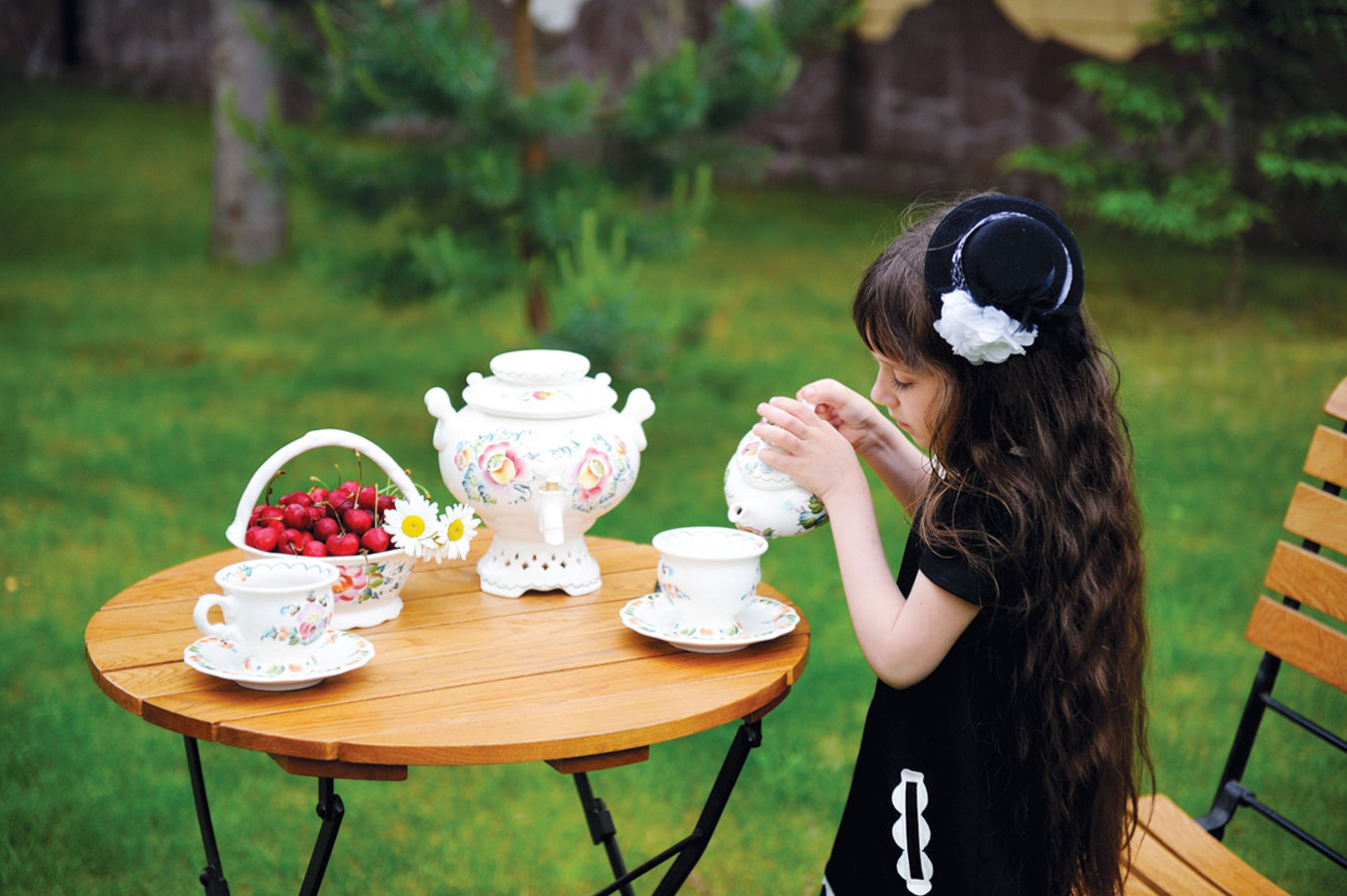
Contrary to popular speculation, Taylor (1999) found that, in terms of broad characteristics such as personality, intelligence, and creativity, children who invent imaginary playmates are no different from children who do not. However, she and other investigators have identified a few relatively specific differences between these two groups. Children who had created imaginary playmates were more likely (1) to be firstborn or only children; (2) to watch relatively little television; (3) to be verbally skillful; and (4) to have advanced theories of mind (Carlson et al., 2003; Taylor & Carlson, 1997; Taylor et al., 2004). These relations make sense. Being without siblings may motivate some firstborn and only children to invent friends to keep them company; not watching much television frees time for imaginative play; and being verbally skilled and having an advanced theory of mind may enable children to imagine especially interesting companions and especially interesting adventures.
Companionship, entertainment, and enjoyment of fantasy are not the only reasons why children invent imaginary companions. Children also use them to deflect blame (“I didn’t do it; Blebbi Ussi did”); to vent anger (“I hate you, Blebbi Ussi”); and to convey information that the child is reluctant to state directly (“Blebbi Ussi is scared of falling into the potty”). As Taylor (1999) noted, “Imaginary companions love you when you feel rejected by others, listen when you need to talk to someone, and can be trusted not to repeat what you say” (p. 63). It is no wonder, then, that so many children invent them.
Knowledge of Living Things
Children are fascinated by living things, especially animals. One sign of their fascination is how often they talk about them. In a study of the first 50 words used by children, the two terms other than “mama” and “dada” that were used by the greatest number of children were “dog” and “cat” (and variants such as “doggie” and “kitty”) (K. Nelson, 1973). “Duck,” “horse,” “bear,” “bird,” and “cow” also were common early terms. By the time children are 4 or 5 years old, their fascination with living things translates into an impressive amount of knowledge about them, including knowledge of observable biological processes such as growth, and unobservable biological processes such as inheritance, illness, and healing (S. A. Gelman, 2003).
274
Coexisting with this relatively advanced knowledge, however, are a variety of immature beliefs and types of reasoning. For example, children often fail to understand the difference between artifacts, such as chairs and cars, which are built by people for specific purposes, and living things, such as monkeys, which are not created by people for any purpose. Thus, when Kelemen and DiYanni (2005) asked 6- to 10-year-olds why the first monkey came to exist, the children often referred to how monkeys serve human purposes, such as “The manager of the zoo-place wanted some” and “So then we had somebody to climb trees.” Another weakness in young children’s biological knowledge is their incorrect beliefs about which things are living and which are not. For instance, most 5-year-olds believe that plants are not alive, and some believe that the moon and mountains are alive (Hatano et al., 1993; Inagaki & Hatano, 2002). Such erroneous notions have led some investigators to conclude that children have only a shallow and fragmented understanding of living things until they are 7 to 10 years old (Carey, 1999; Slaughter, Jaakkola, & Carey, 1999). In contrast, other investigators believe that by age 5 years, children understand the essential characteristics of living things and what separates them from nonliving things but are just confused on a few points (S. A. Gelman, 2003). A third view is that young children simultaneously possess both mature and immature biological understanding (Inagaki & Hatano, 2008). With this dispute in mind, we will now consider what young children do and do not know about living things and how they acquire knowledge about them.
Distinguishing Living from Nonliving Things
As noted previously, infants in their first year already are interested in people and distinguish them from nonliving things (Figure 7.3). Other animals also attract infants’ interest, though infants act differently toward them than they do toward people. Nine-month-olds, for example, pay more attention to rabbits than they do to inanimate objects, but they smile less at rabbits than they do at people (Poulin-Dubois, 1999; Ricard & Allard, 1993).
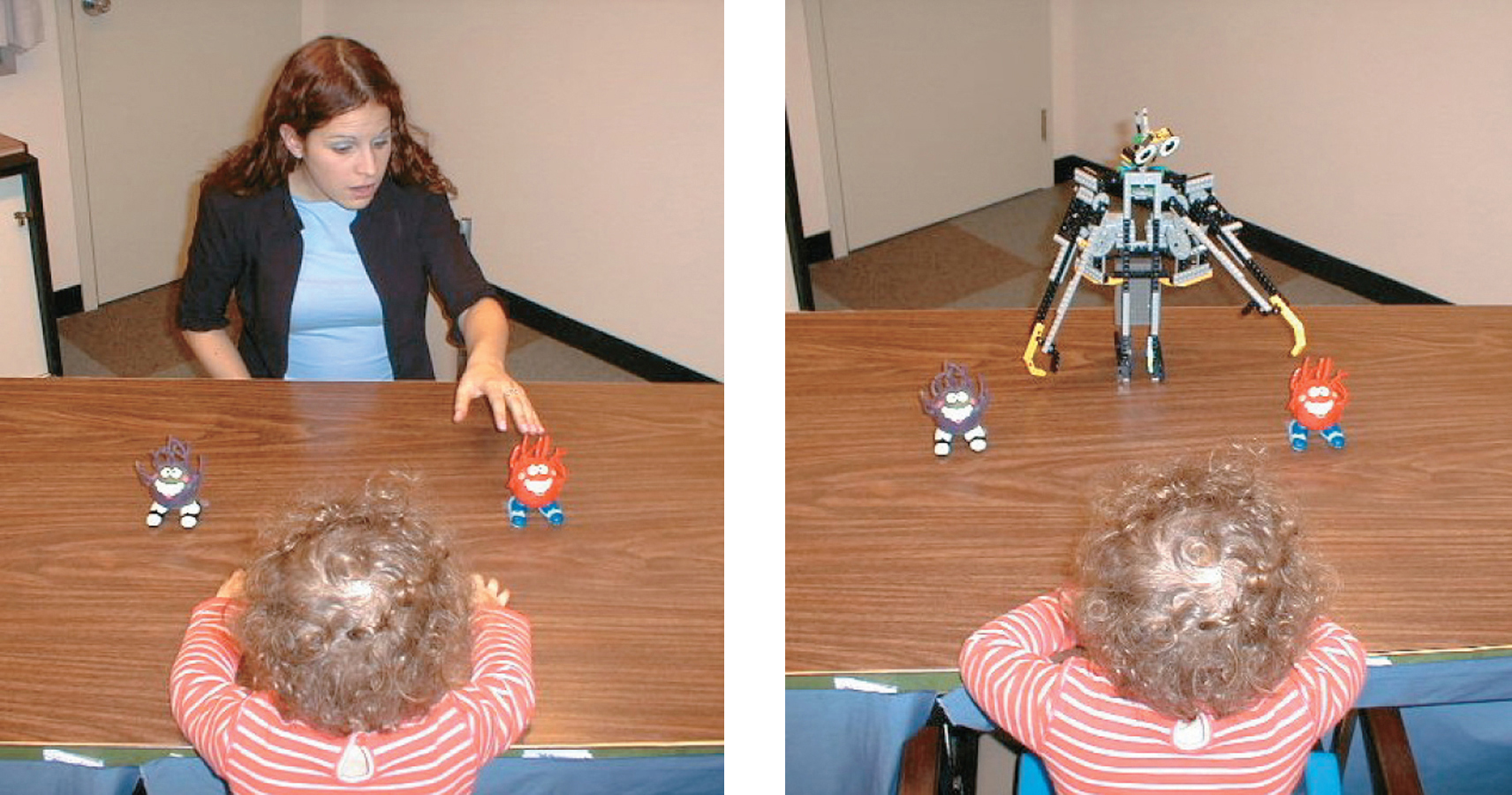
These behavioral reactions indicate that infants in their first year distinguish people from other animals and that they distinguish both from inanimate objects. However, the reactions do not indicate when children construct a general category of living things that includes plants as well as animals or when they recognize humans as a type of animal. It is difficult to assess children’s knowledge of these and many other properties of living and nonliving things until the age of 3 or 4 years, when they can comprehend and answer questions about these categories. By this age, they clearly know quite a bit about the similarities among all living creatures and about the differences between living creatures and inanimate objects. This knowledge of living things is not limited to visible properties such as having legs, moving, and making distinctive noises. It also extends to biological processes such as digestion and heredity (S. A. Gelman, 2003). At least through age 5 or 6, however, many children deny that people are animals (Carey, 1985).
275

Understanding the life status of plants also presents a challenge to young children. On one hand, most preschoolers know that plants, like animals but unlike inanimate objects, grow (Hickling & Gelman, 1995; Inagaki & Hatano, 1996), heal themselves (Backscheider, Shatz, & Gelman, 1993), and die (Springer, Nguyen, & Samaniego, 1996). On the other hand, most preschoolers believe that plants are not alive; in fact, it is not until age 7 to 9 years that a clear majority of children realize that plants are living things (Hatano et al., 1993). Part of the reason is that children often equate being alive with being able to move in adaptive ways that promote survival; plants do move in this way, but their adaptive movements, such as bending toward sunlight, occur too slowly to observe under ordinary circumstances (Opfer & Gelman, 2001). Consistent with this interpretation, letting 5-year-olds know that plants bend toward sunlight and that their roots grow toward water leads the children to conclude that plants, like animals, are living things (Opfer & Siegler, 2004).
More generally, culture and direct experience influence the age at which children understand that plants are, in fact, alive. For example, children growing up in rural areas realize that plants are living things at younger ages than do children growing up in cities or suburbs (J. D. Coley, 2000; N. Ross et al., 2003).
Understanding Biological Processes
Preschoolers understand that biological processes, such as growth, digestion, and healing, differ from psychological ones (Wellman & Gelman, 1998). For instance, while 3- and 4-year-olds recognize that desires influence what people do, they also recognize that some biological processes are independent of one’s desires. Distinguishing between biological and psychological processes, for example, leads preschoolers to predict that people who overeat but wish to lose weight will not get their wish (Inagaki & Hatano, 1993; Schult & Wellman, 1997).
Preschoolers also recognize that properties of living things often serve important functions for the organism, whereas properties of inanimate objects do not. Thus, 5-year-olds recognize that the green color of plants is crucial for them to make food, whereas the green color of emeralds has no function for the emerald (Keil, 1992). The extent of preschoolers’ understanding of biological processes can be understood more fully by examining their specific ideas about inheritance, growth, and illness.
Inheritance Although 3- and 4-year-olds obviously know nothing about DNA or the mechanisms of heredity, they do know that physical characteristics tend to be passed on from parent to offspring. If told, for example, that Mr. and Mrs. Bull have hearts of an unusual color, they predict that Baby Bull also will have a heart of that color (Springer & Keil, 1991). Similarly, they predict that a baby mouse will eventually have hair of the same color as its parents, even if it is presently hairless.
276
Older preschoolers also know that certain aspects of development are determined by heredity rather than by environment. For example, 5-year-olds realize that an animal of one species raised by parents of another species will become an adult of its own species (S. C. Johnson & Solomon, 1997).
Coexisting with this understanding are numerous misguided beliefs about inheritance. Many preschoolers believe that mothers’ desires can play a role in their children’s inheritance of physical qualities, such as having blue eyes (Weissman & Kalish, 1999). Many preschoolers also believe that adopted children are at least as likely to look like their adoptive parents as like their birth parents (G. E. Solomon et al., 1996). In other situations, preschoolers’ belief in heredity is too strong, leading them to deny that the environment has any influence. For example, preschoolers tend to believe that differences between boys and girls in play preferences are due totally to heredity (M. G. Taylor, 1993).
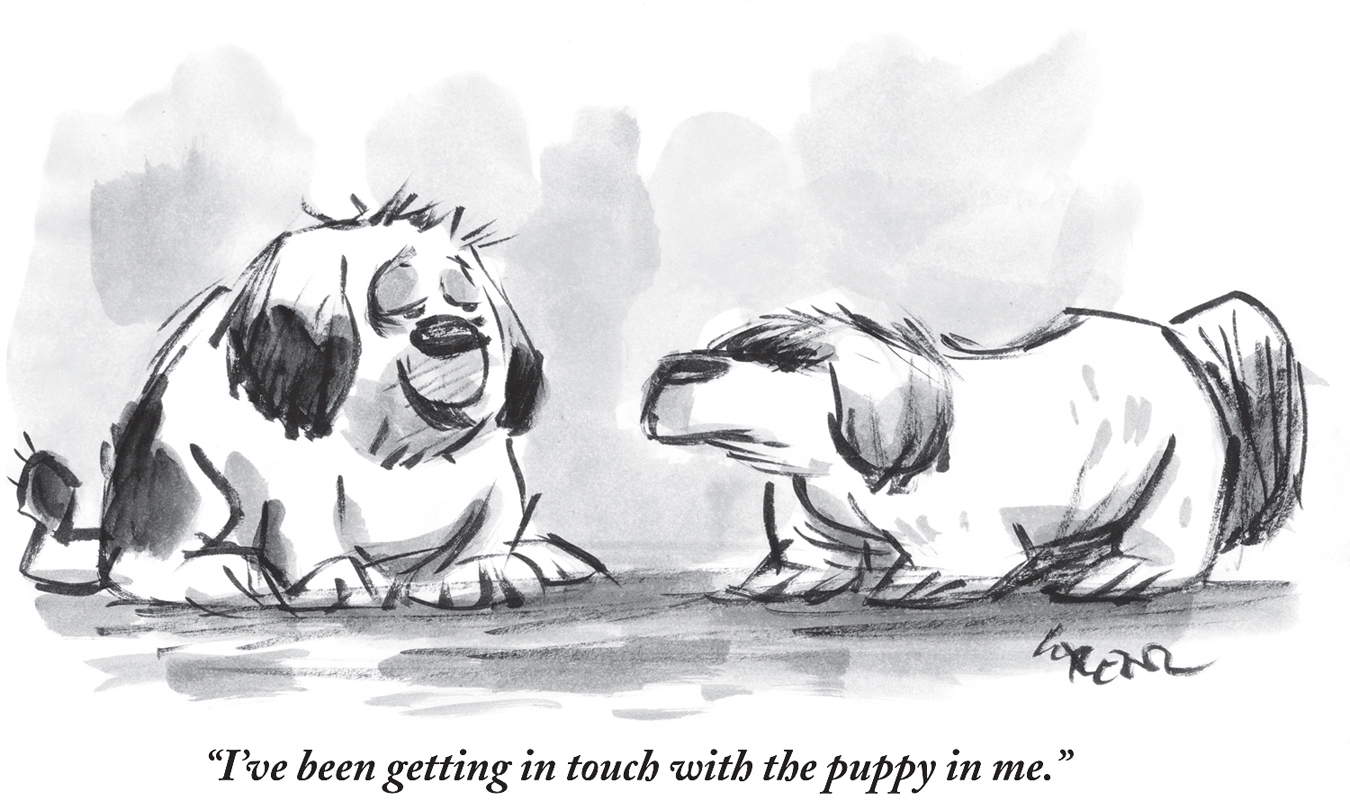
essentialism  the view that living things have an essence inside them that makes them what they are
the view that living things have an essence inside them that makes them what they are
Related to this general belief in the importance of heredity is one of the most basic aspects of children’s biological beliefs—essentialism, the view that living things have an essence inside them that makes them what they are (S. A. Gelman, 2003). Thus, most preschoolers (as well as most older children and adults) believe that puppies have a certain “dogness” inside them, kittens have a certain “catness,” roses have a certain “roseness,” and so on. This essence is what makes all members of the category similar to one another and different from members of other categories; for instance, their inner “dogness” leads to dogs’ barking, chasing cats, and liking to be petted. This essence is viewed as being inherited from one’s parents and being maintained throughout the organism’s life. Thinking in terms of such essences seems to make it difficult, both for children and for many adults, to understand and accept biological evolution (E. M. Evans, 2008). If animals inherit an unchanging essence from their parents, how, they may wonder, would it be possible, say, for mice and whales to have common ancestors?
Growth, illness, and healing Preschoolers realize that growth, like inheritance, is a product of internal processes. They recognize, for example, that plants and animals become bigger and more complex over time because of something going on inside them (again, preschoolers are not sure what) (Rosengren et al., 1991). Three- and four-year-olds also recognize that the growth of living things generally proceeds in only one direction (smaller to larger) at least until old age, whereas inanimate objects such as balloons can become either smaller or larger at any point in time.
Preschoolers also show a basic understanding of illness. Three-year-olds have heard of germs and have a general sense of how they operate. They know that eating food that is contaminated with germs can make a person sick, even if the person is unaware of the germs’ presence (Kalish, 1997). Conversely, they realize that psychological processes, such as being aware of germs in one’s food, do not cause illness.
Finally, preschoolers know that plants and animals, unlike inanimate objects, have internal processes that often allow them to regain prior states or attributes. For example, 4-year-olds realize that a tomato plant that is scratched can heal itself and that an animal’s hair can grow back after being cut but that a scratched chair cannot heal itself and that a doll’s hair cannot grow back (Backscheider et al., 1993). Preschoolers also recognize the limits of living things’ recuperative processes: they understand that both illness and old age can cause death, from which no recuperation is possible (Nguyen & Gelman, 2002).
277
How Do Children Acquire Biological Knowledge?
As with other aspects of conceptual development, nativists and empiricists have very different ideas regarding the development of children’s biological understanding. Nativists propose that humans are born with a “biology module” much like the theory of mind module described earlier in the chapter. This brain structure or mechanism helps children learn quickly about living things (Atran, 1990, 2002). Nativists use three main arguments to support the idea that people have a biology module.
- During earlier periods of our evolution, it was crucial for human survival that children learn quickly about animals and plants.
- Children throughout the world are fascinated by plants and animals and learn about them quickly and easily.
- Children throughout the world organize information about plants and animals in very similar ways (in terms of growth, reproduction, inheritance, illness, and healing).
Empiricists, in contrast, maintain that children’s biological understanding comes from their personal observations and from information they receive from parents, teachers, and the general culture (Callanan, 1990). When mothers read to their 1- and 2-year-olds about animals, for example, many of the mothers’ comments suggest that animals have intentions and goals, that different members of the same species have a lot in common, and that animals differ greatly from inanimate objects (S. A. Gelman et al., 1998). Such teaching is often elicited by children’s questions: when 3- to 5-year-olds encounter unfamiliar things, they ask a higher percentage of questions about the functions of things that appear to be man-made but ask a higher percentage of questions about the biological properties of things that look like animals or plants (Margett & Witherington, 2011). Such questions reflect children’s biological knowledge as well as increase it.
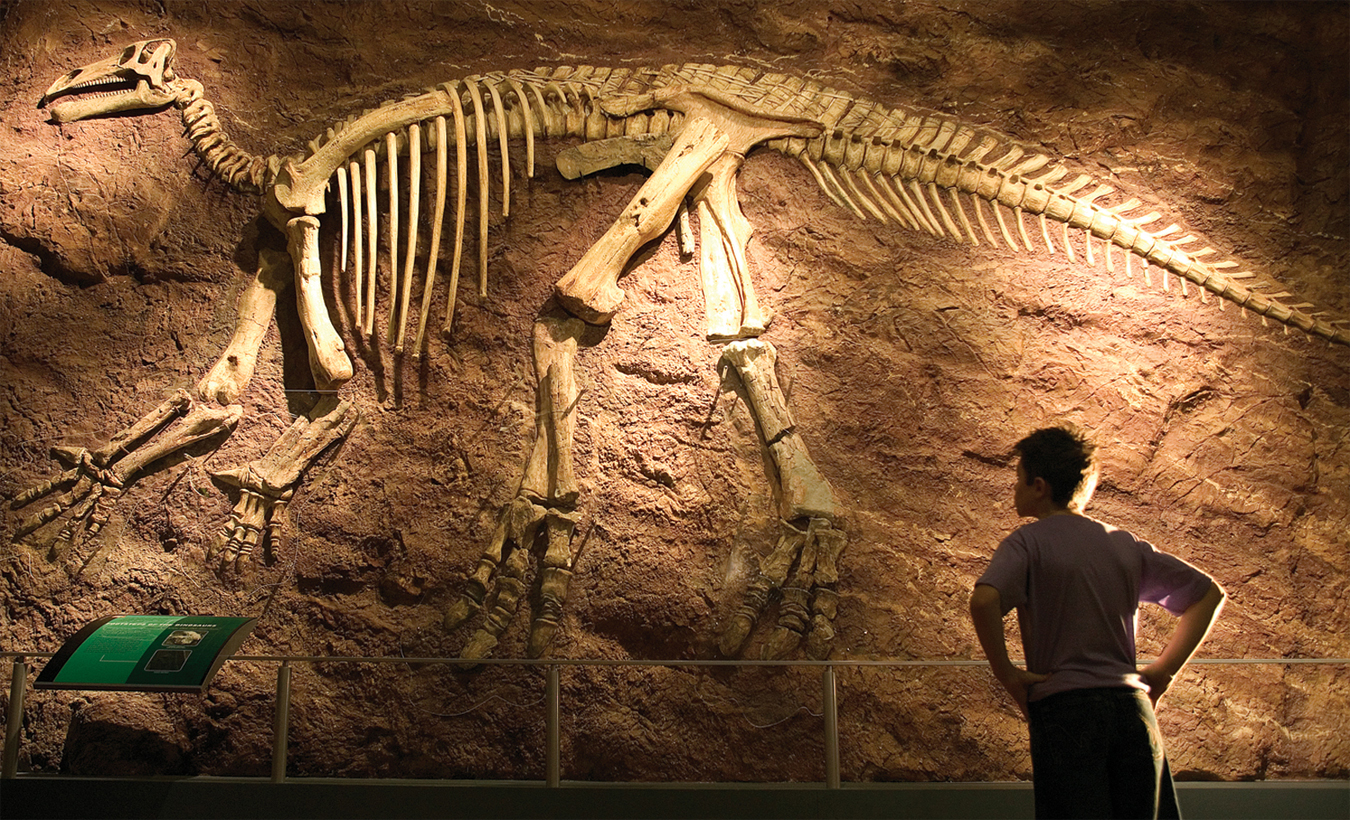
278
Empiricists also note that children’s biological understanding reflects the views of their culture. For example, 5-year-olds in Japan are more likely than their peers in the United States and Israel to believe that nonliving things and plants are able to feel physical sensations, such as pain and cold (Hatano et al., 1993). This tendency of Japanese children echoes the Buddhist tradition, still influential in Japanese society, which views all objects as having certain psychological properties.
As with the parallel arguments regarding the sources of psychological understanding, both nature and nurture seem certain to play important roles in the acquisition of biological understanding. Young children are innately fascinated by animals and learn about them much more quickly than about aspects of their environment that they find less interesting. At the same time, the particulars of what children learn obviously are influenced by the information, beliefs, and values conveyed to them by their parents and their society. And, as always, nurture responds to nature, as parents provide informative answers to their children’s many questions about living things, which in turn reflect the children’s interest in those things.
review:
From early in infancy, children form categories of similar objects. Such categorization helps them infer the properties of unfamiliar objects within a category. For example, if children learn that a new object is an animal, they know that it will grow, move, and eat. Children form new categories, and include new objects within an existing category, on the basis of similarities between the appearance and function of the new object and objects already known to be category members.
One particularly important category is people. From the first days of life, infants are interested in other people and spend a great deal of time looking at them. By age 3 years, they form a simple theory of mind that includes some understanding of the causal relations among desires, beliefs, and actions. Not until age 4 or 5 years, however, do most children become able to solve false-belief problems that require them to understand that other people will act in accord with their own beliefs, even if the child knows that those beliefs are wrong. The development of understanding of other people’s minds during the preschool period has been attributed to biological maturation of a theory of mind module, to interactions with other people, and to the growth of information-processing capabilities that allow children to understand increasingly complex social situations.
Another vital category is living things. During the preschool years, children gain a basic understanding of the properties of biological entities: growth, heredity, illness, and death. Not until children go to school, however, do most of them group plants with animals into a single category of living things. Explanations for children’s relatively rapid acquisition of biological knowledge include the extensive exposure to biological information provided by families and the broader culture, children’s own questions that elicit useful information about plants and animals from other people, and the existence of brain mechanisms that lead children to be interested in living things and to learn about them quickly and easily.